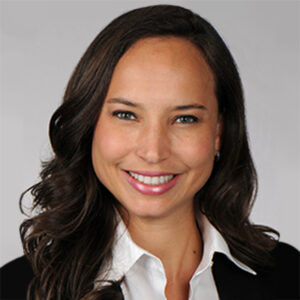Practice Management
September 2023
by John Pinto and Corinne Wohl, MHSA, COE
One of the more common new client quandaries we hear goes like this: “Our practice was founded by Dr. Jones 30 years ago. Since then, Jones Eye Center has grown to become a local leader in eyecare—at least until recently.
“Because Dr. Jones is such a strong personality, none of the other partners have competed with him for leadership of the practice. We’ve been happy just focusing on our individual practices and conditioned to let Dr. Jones and our long-time administrator run the show.
“Unfortunately, Dr. Jones’ health has gone downhill this year and he abruptly stepped down last month. Not only have we lost the managing partner of our practice, but we’ve lost one of the highest producers. Now our administrator has announced her plans to retire in January. What do we need to do next?”
Here are tips to help you and your practice avoid the acute difficulties of Jones Eye Center.
1. Vote on future plans for your practice.
There are numerous options:
- You could downsize to improve owner work-life balance.
- You could keep things status quo if you like the current pace and service mix.
- You could nominate a modest or material growth path and feed that growth with resources: facilities, staff, marketing.
- Or you could vote to groom the practice for a private equity divestiture.
Whatever the selected option, you and your board should write it down, share it with your associate providers and senior lay staff, and refer to it often. It is hard to select the right leader unless everyone is clear about where you want the leader to take you. Make a formal plan, formally approve it, then revise and reaffirm it at least annually.

2. Define the job of managing partner. Just as you have a written position descriptions for every other job in the practice, there should be a detailed description of the lead physician’s role. In some practices, this leans toward strictly business duties: chairing board meetings, signing contracts and checks, conferring with the management team on operations. In other practices, there is a concomitant clinical quality assurance oversight role: tracking surgical outcomes, editing care pathways, gauging patient satisfaction, and the like.
3. Choose one leader. Select a managing partner, and rotate the job among the partners. How often? The best term of office is 2 years (with no overall term limits). This gives the new physician leader enough time to settle into the role and get things accomplished. Sometimes it can be hard for any one physician to contemplate taking 100% of the managing partner’s considerable job. Practices that experiment with two co-managing physicians or with an open committee structure (with no chairperson) often revert back to a steeper hierarchical form of management when they fail to make decisions or take timely action.
4. Groom the next leader. You should be continuously grooming at least one successor doctor for the managing partner position. The candidate for succession should be rotated through specific business management duties. You might post them with the practice marketing committee or with the billing department to oversee compliance and utilization. Put them in charge of projects large and small, such as the development of a surgical facility or adoption of a new service line.
5. Govern effectively. Your practice should have clearly drafted rules for how decisions are made. Small decisions (on the order of a few hundred dollars in impact) are often delegated to staff. Medium-size decisions can be carried by a simple majority of the board (e.g., three out of five). Large decisions (like selling the practice, assuming significant new debt, terminating a doctor) will typically require a super majority (e.g., four out of five partners). Nimble, resilient practices actively delegate decisions to junior partners, associates, and staff, which reduces the organization’s dependency on any one person, and prepares younger people for greater responsibility. Non-resilient practices get stuck, even on small decisions.
6. Delegate. Every doctor in the practice—both partners and associates, even if they aren’t in line to be managing partner—should be given non-clinical tasks to perform. In other business settings outside of medicine, this delegation helps to develop up and coming managers and keeps the enterprise from becoming overly dependent on any one individual. One of the wisest moves a managing partner can make is to delegate projects to each member of the board throughout the year. Doing so stimulates owner engagement and gives non-leader physicians on the board an appreciation for the difficulties of being a leader.
7. Remember: You need a strong lay leader, too. Not every ophthalmic practice has an administrator. Experience shows that with up to about three providers and around $4 million in annual revenue, a strong managing partner, with adequate mid-level department heads, can run the practice. Above this size, it is obliged to empower a lay executive. Their talents need to resonate with the practice’s scale and ambition. At the very least, core competencies include: financial numeracy, team curation and general leadership skills, good judgment, communication and over time, and a deep understanding of the practice services on offer. Remember that the best practices, large and small, are managed by a strong lead doctor and a strong lay manager working together closely.
8. Anticipate. Even the most energetic managing partner will wind down one day. Whether slowly as in most cases or abruptly, anticipating the inevitable will allow you to shift from leader to leader with minimal business interruption or boardroom discord.
About the authors
John Pinto
President
J. Pinto & Associates
San Diego, California
Corinne Wohl, MHSA, COE
President
C. Wohl & Associates
San Diego, California
Contact
Pinto: pintoinc@aol.com, 619-223-2233
Wohl: czwohl@gmail.com, 609-410-2932



